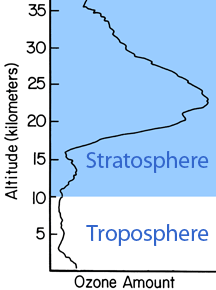
windows2universe.org
2.1/2018
Ozone modifies the metabolic and endocrine response to glucose: Reproduction of effects with the stress hormone corticosterone
https://www.ncbi.nlm.nih.gov/pubmed/29391239
Ultrafine Particulate Matter Combined with Ozone Exacerbates Lung Injury in Mature Adult Rats with Cardiovascular Disease.
https://www.ncbi.nlm.nih.gov/pubmed/29394414
Effects of Simulated Smog Atmospheres in Rodent Models of Metabolic and Immunologic Dysfunction.
https://www.ncbi.nlm.nih.gov/pubmed/29384667
Aging Exacerbates Neuroinflammatory Outcomes Induced by Acute Ozone Exposure.
https://www.ncbi.nlm.nih.gov/pubmed/29385576
Associations between ambient air pollution and daily mortality in a cohort of congestive heart failure: Case-crossover and nested case-control analyses using a distributed lag nonlinear model.
https://www.ncbi.nlm.nih.gov/pubmed/29361317
News on Climate change, air pollution and allergic trigger factors of asthma.
https://www.ncbi.nlm.nih.gov/pubmed/29345235
Association between PM10, PM2.5, NO2, O3 and self-reported diabetes in Italy: A cross-sectional, ecological study
https://www.ncbi.nlm.nih.gov/pubmed/29342195
Global association between ambient air pollution and blood pressure: A systematic review and meta-analysis.
https://www.ncbi.nlm.nih.gov/pubmed/29331891
Ozone-Induced Vascular Contractility and Pulmonary Injury are Differentially Impacted by Diets Enriched with Coconut Oil, Fish Oil, and Olive Oil.
https://www.ncbi.nlm.nih.gov/pubmed/29329427
------------------------------------------------------------------------------------------------
Ozone exposure induces respiratory barrier biphasic injury and inflammation controlled by Interleukin-33.
https://www.ncbi.nlm.nih.gov/pubmed/29331644
..CONCLUSION:
The data demonstrate that ozone causes an immediate barrier injury which precedes myeloid cell mediated inflammatory injury under the control of IL-33/ST2 axis. Thus, IL-33/ST2 signaling is critical for the maintenance of intact epithelial barrier and inflammation.
IL-33 Drives Augmented Responses to Ozone in Obese Mice https://ehp.niehs.nih.gov/ehp272/
..Recent reports by others indicate profound systemic effects of O3 exposure that include elevations in circulating glucose and lipids (Miller et al. 2015). Hence, we cannot rule out the possibility that the observed effects of γδ T cell deficiency (Figure 5) and anti-ST2 (Figures 1 and 3) were the result of systemic rather than pulmonary effects of O3 in obese mice. However, as IL-33 was reduced in the blood, but increased in BAL after O3 exposure, the observed effects of IL-33 were more likely the result of IL-33 released in the lung.
----
Increased Concentrations of Interleukin-33 in the Serum and Cerebrospinal Fluid of Patients with Multiple Sclerosis. https://www.ncbi.nlm.nih.gov/pubmed/268 ... t=Abstract
..CONCLUSIONS:
Our results showed increased concentrations of IL-33 in patients with MS including both untreated and treated MS patients and patients with the RRMS, SPMS, and PPMS forms. This suggests that IL-33 may be involved in the pathogenesis of all MS forms and treatment with methylprednisolone or both interferon-β plus methylprednisolone has no influence on IL-33 concentrations.



